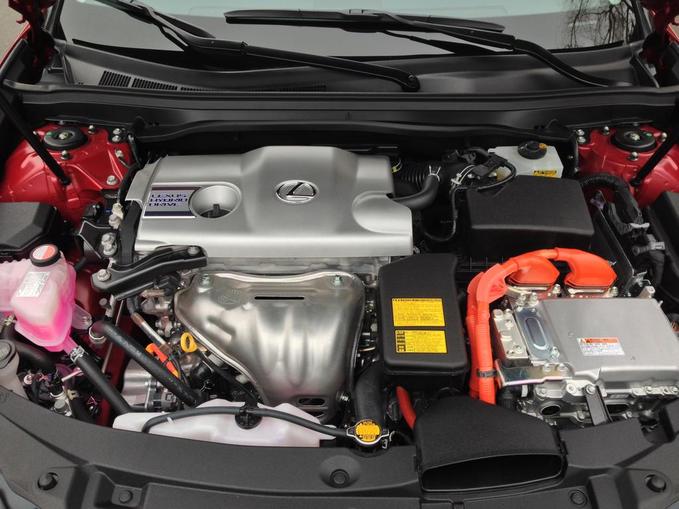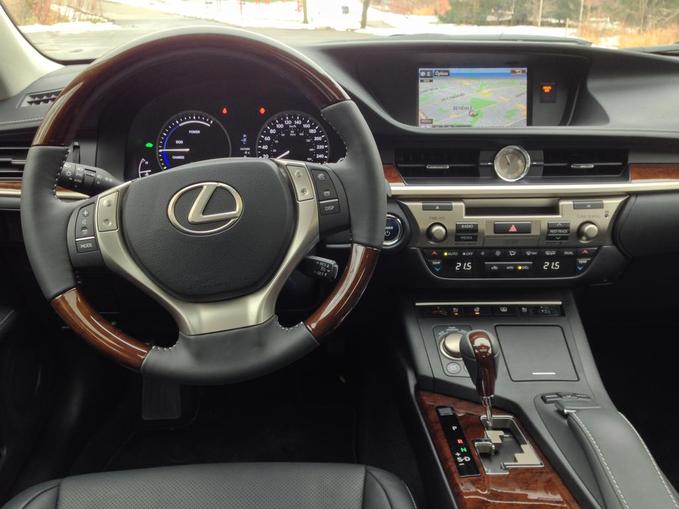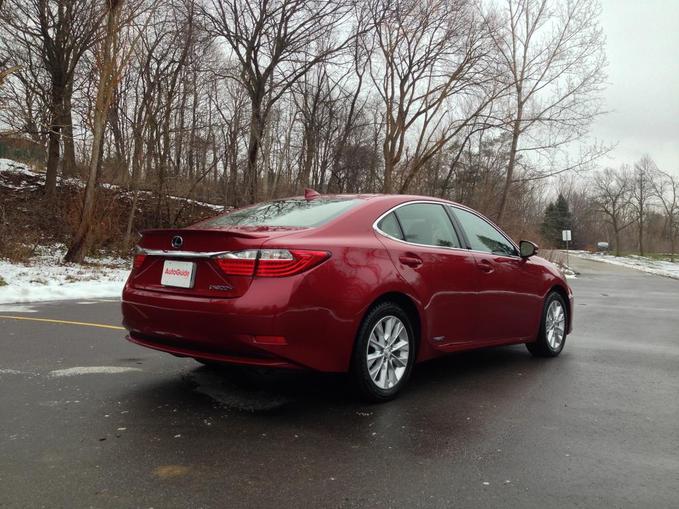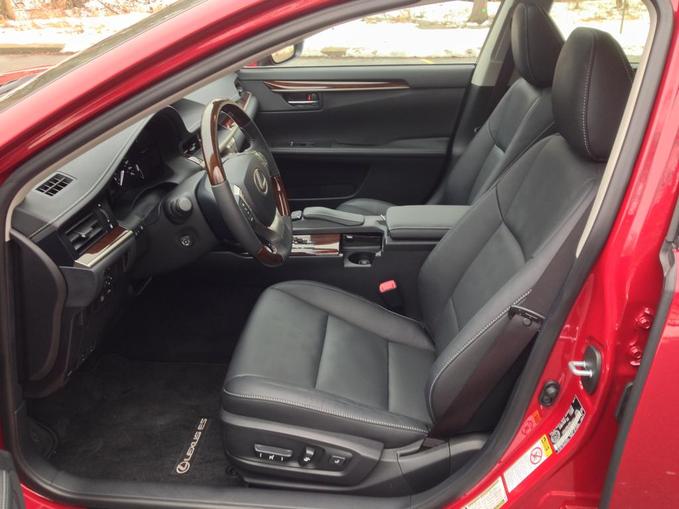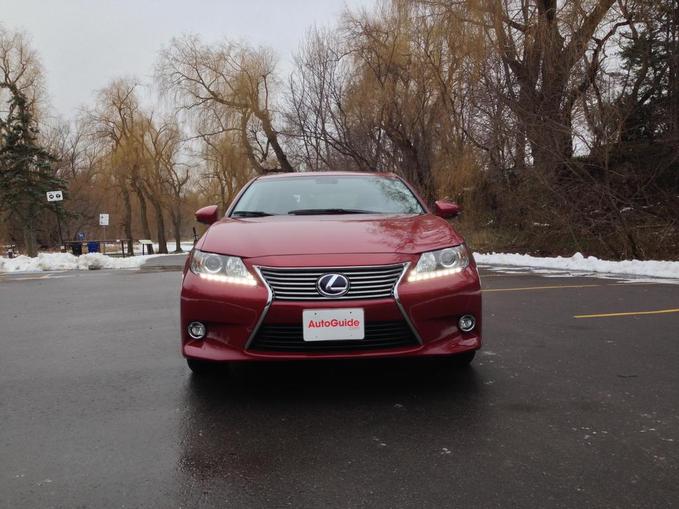Lexus has a rather unique position in North America.
It’s the only automaker to offer a full line of premium and luxury vehicles. The Japanese manufacturer battles premium brands like Acura and Buick while also taking on the best German luxury has to offer. But there is one offering that is a bit of a lone wolf in Lexus’ portfolio: the ES hybrid sedan.
Unique Price, Unique Powertrain
Starting at a base price of $38,745 after destination charges, the front-wheel drive only ES significantly undercuts midsize luxury sedans like the BMW 5 Series and Audi A6. But the ES was never intended to take cars like that on as it lacks their refinement and driving dynamics. The pricing and purpose of the ES lines up better with the Acura TLX or the Buick Lacrosse.
SEE ALSO: 2013 Lexus ES Review – Video
With nearly every option box checked off, my ES300h came in at an as tested price of $49,705 thanks to the inclusion of the navigation/premium audio package, ultra luxury package, intuitive parking assist, HID headlamps, rain sensing wipers and rear cross traffic alert. That keeps it competitive with the newly arrived TLX, but there is one major difference. The Acura and Buick are equipped with a V6 and all-wheel drive, but the ES300h uses a class-exclusive hybrid drivetrain with only two driven wheels.
A Proper Hybrid
It’s true the Lacrosse can be had with GM’s eAssist mild hybrid system, but calling that a real hybrid system is like calling the Lexus RX350 F Sport a sports car. Under the hood of the ES300h is a familiar 2.5-liter Atkinson cycle four-cylinder engine paired up to an electric motor. The gasoline engine itself makes 156 hp and 156 lb-ft of torque while the combined system is reported to make 200 hp. In usual Toyota/Lexus hybrid fashion, total torque output numbers are not listed.
But what is known is the ES300h’s 0-60 MPH time. Running on regular grade gasoline, the hybrid Lexus is good for an 8.1 second run up to highway speeds. Three driving modes are available in the ES including ECO, normal and sport. The first two modes feature a large power meter in the gauge cluster beside the speedometer. Although it does not look like it at first glance, the power meter is actually digital and once sport mode is selected, changes into a traditional tachometer.
A Bit of Power, a Lot of Efficiency
Power in sport mode is quite good for a four cylinder hybrid. It surprised me with its responsiveness as the eCVT is quick to build engine speed for maximum acceleration. Hammer the throttle and the ES300h will hold near redline until maximum acceleration is no longer needed. The best part is, sport mode doesn’t automatically impact fuel consumption, as the car is willing to cruise at low RPM even in its more aggressive mode.
Official fuel economy ratings are pegged at 40 MPG city and 39 MPG highway. During my week with the car I was only able to achieve an average of 34 MPG, which can be attributed partially to cold temperatures and the fact the car was fitted with winter tires instead of the more efficient ECO all-seasons.
Refinement Drawn into Question
The ES has never been positioned as a sporty car and that stays true for the current sedan. Wearing relatively skinny 215/55R17 tires, its real mission is to be comfortable and quiet, which is where my complaints begin.
From a ride and comfort standpoint, the ES doesn’t stand out very much from the Toyota Avalon that it shares a platform with. Worse still, I spent a week in the new 2015 Camry right before my stint in the ES300h and I didn’t find much of a discernible difference. It’s not that the ES is that bad, the new Camry is just that good.
SEE ALSO: 2014 Kia Cadenza VS 2014 Lexus ES 350
The ES doesn’t feel all that substantial either. Lexus kept the weight down to 3,660 lbs. to maximize efficiency, but that also means it feels light, too light. I don’t mean this in a sporty way either, but more so the car feels hollow. Close the driver’s door and there is an unwelcome clang instead of a posh thud. And while I’m on the topic, the engine features a noticeable shutter when firing back up after operating in EV mode; a less than refined feeling in a car that really isn’t supposed to be anything other than comfortable and quiet.
Comfort and Space
The ride quality and refinement of the ES may not separate it from the Avalon and Camry, but the interior does. The materials used are nicer than I remember and are placed in an attractive yet inoffensive layout. My only complaint here is that the plastic Lexus uses on the lower center console feel cheap and that the power rear window shade doesn’t quite fit the entire window.
Space isn’t an issue for passengers as the rear seat easily accommodates adults with a generous 40 inches of legroom. Just be careful in tight parking lots as the large rear doors need a lot of space to fully open. The trunk is less generous as the hybrid battery pack eats into cargo space reducing it to just 12.1 cubic feet, which is actually less than a Ford Fiesta sedan.
The Verdict:
The ES continues to be a bit of a perplexing automobile. In some forms it has direct competitors while in other guises, like the 300h hybrid, it has none. This alone should ensure healthy sales numbers as anyone looking for a fairly large, efficient, premium sedan only has one choice. Still, Lexus needs to further differentiate the ES from its mainstream siblings as currently, it’s hard to recommend one over a fully loaded Toyota Avalon hybrid.







